Cricket
Usman Khawaja starts the new year with a 100 at the SCG.

The Australian batter Usman Khwaja started the year 2023 with his highest Test score.
Usman Khawaja was the only one of Australia’s top five batsmen who hadn’t made a century this season until today. It probably shouldn’t have been a surprise that he cleared the air at the SCG.
A year ago to the day, Khawaja came back to Test cricket on this ground against England, mostly by accident when Travis Head got sick with Covid. If that chance hadn’t come up, it would still be one of the biggest “what ifs” for this team.
Khawaja would go on to make two hundreds in that game, which made him impossible to drop. At the end of 2022, he had scored 1080 runs at a rate of 67.50, and that was even with a slow end in the first two Tests against South Africa. Now he has a great start to the year 2023. He has had one of the best comebacks in recent cricket history.
When Khawaja made his second run in the 76th over, he became only the fourth player after Wally Hammond, Doug Walters, and VVS Laxman to make three straight hundreds at the SCG. At the end of the day, when he was still unbeaten on 195 and rain was starting to fall again, his average at the venue was 130.83, which was almost double his next best average at a venue where he has played more than one Test.
People talk a lot about how long this Australian Test team will stay together, and some think that the next seven months, which could define an era, will be the last time this group plays together. Khawaja turned 36 a few weeks ago, which is the same age as his opening partner and good friend David Warner. This has led to questions about the change.
Warner told Fox Cricket on the first day of play, “We’re going to enjoy the next year as much as we can.” “It’s important to us that we don’t leave this team with a big hole. I know from those five years when a lot of the best players left that there are big holes to fill no matter how many games you play.
“We always talk about how many games a team has played and how much that affects how well they play and how they think. You can’t make up for that.”
Warner’s MCG double-century may have re-energized his Test career enough for it to last beyond the overseas tours of India and England. He was coy last week about possibly playing Boxing Day again, and he has said before that Tests will be the first to go, but as a single-format player, there seems to be no reason why Khawaja couldn’t get to 40 if he still has the hunger.
Steven Smith said, “Right now, he’s at the top of his game. He’s scoring runs with ease and hitting the ball well, so I think he’s pretty comfortable and playing really well.” “I guess he can play as long as he wants, just like Davey, and hang them up whenever he wants.”

Khawaja had a strange time with the West Indies series. Twice, he got to 60 runs and looked like he was going to get more, but then he was out by a medium-paced bowler. Kyle Mayers in Perth and Devon Thomas, who was really the backup wicketkeeper, in Adelaide. In the first innings against South Africa at the Gabba, Khawaja was hit in the middle by a peach from Anrich Nortje. He then hit a shot to point in the small chase. Then, at the MCG, he hit Kagiso Rabada outside off before watching most of the rest of the batting team break apart South Africa’s attack. But Khawaja has found a way to stay very calm when things go wrong in sports.
This time around, Khawaja was in charge. On 25, he was given a lbw for reverse sweeping against Simon Harmer, but the DRS showed that he was holding a glove. On a pitch that sometimes helped, the offspinner gave Khawaja a few more uneasy moments, but he was mostly calm.
Khawaja’s batting against Harmer and Keshav Maharaj had a lot of the same parts as when he played in Pakistan, where he scored 496 runs in three Tests. He had an 87.30% strike rate against the struggling Maharaj, who could tell this player was different from the one he faced in 2018.
Maharaj said, “It’s clear that he’s come back and worked very hard.” “When I played him here in 2016 and then again in South Africa in 2018, I could see that he plays all around the wicket, he has a lot of faith in his defense, and he knows when he has a chance to score. His hands are very good. He has worked very hard, and he is a much better player against spin than he was four years ago.”
Smith, who batted with Khawaja for a total of 209 runs, sees a player who is very comfortable with his game.
He said, “I think he’s just really at ease with the way he’s playing.” “He has a lot of ways to score. If you set up the field one way, he can play one way to get a boundary and force you to put someone there, then play another way and force you to put someone there.
“His horizontal bat shots against spin are very good. He hasn’t played the reverse as much as I thought he would today, but since there wasn’t much spin, he probably didn’t need to.”
Khawaja began 2023 the same way he did last year. Whether or not he can keep having the same kind of success he did in the past year could have a big effect on how well the Test team does.
Cricket
1000 Runs in ODIs: Kohli’s Cricket Legacy
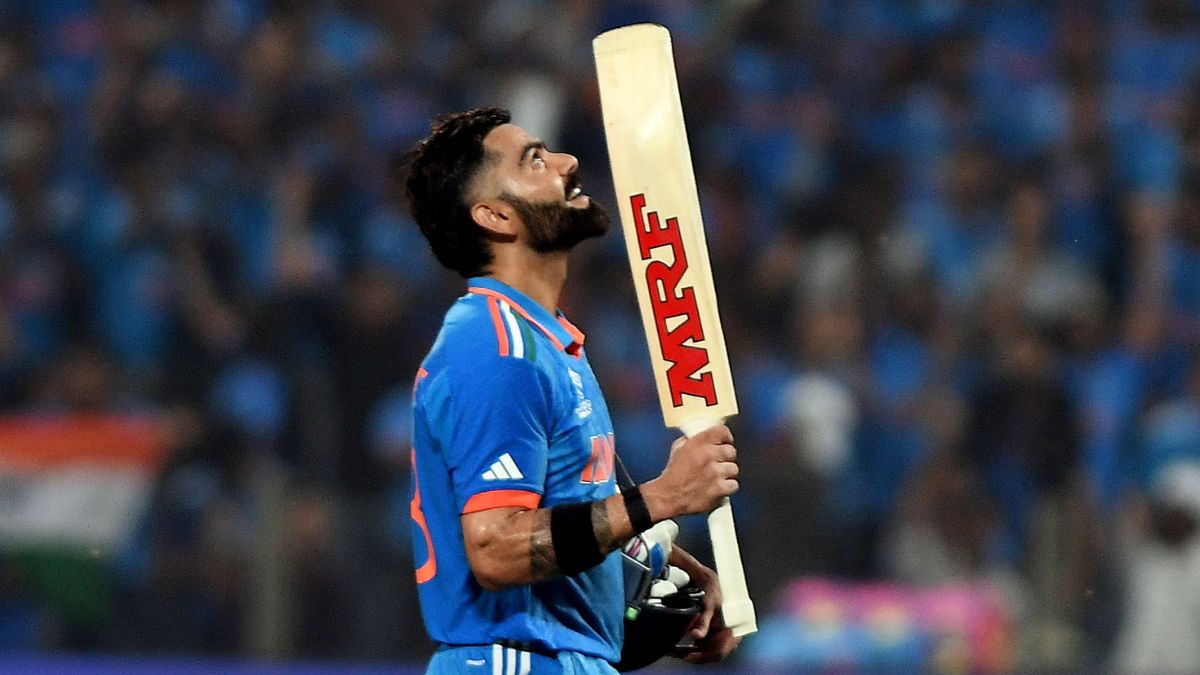
On Thursday, November 2, Virat Kohli achieved an accomplishment. He became the batsman to surpass 1000 runs in ODIs in 2023, following in the footsteps of Shubman Gill and Rohit Sharma. Not that,. He also joined Rohit Sharma, Shubman Gill, and Pathum Nissanka as the fourth players to achieve this impressive record in the 50-over format within the same year.
Stepping into History with 1000 Runs in ODIs
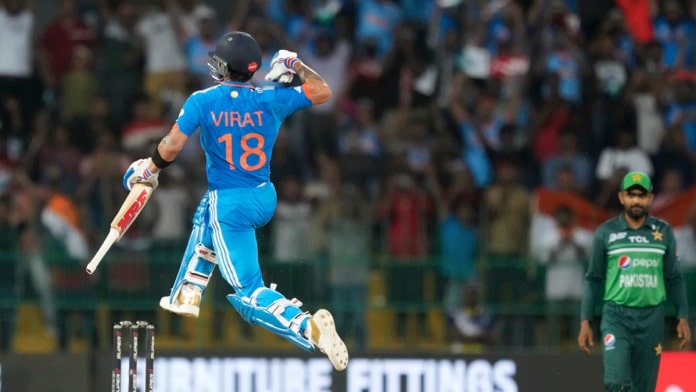
Entering the realm of history, Kohli’s unwavering determination and exceptional skills were put on display during his match in 2023. Notably, the cricket maestro, now 34 years old, made an indelible impact by surpassing Sachin Tendulkar‘s record, securing the most number of years with 1000 runs in ODIs. Kohli’s consistent ability to perform at such an exceptional level has been a defining characteristic of his illustrious career, as he had previously achieved this monumental milestone in 2011, 2012, 2013, 2014, 2017, 2018, and 2019, before accomplishing it once again in the present year of 2023.
Sachin Tendulkar with god of cricket Virat Kohli pic.twitter.com/zmztejNBBB
— Kevin (@imkevin149) November 2, 2023
An Unforgettable Journey
In an intense World Cup 2023 clash against Sri Lanka at the renowned Wankhede Stadium in Mumbai, Virat Kohli’s pursuit of this historic milestone was realized with an impressive 34 runs. Despite facing challenges, including a rare duck against England at the Ekana Stadium in Lucknow, his overall performance throughout the year has been nothing short of spectacular.
Kohli’s memorable journey was highlighted by an unbeaten century during India’s triumphant seven-wicket victory against Bangladesh at the Maharashtra Cricket Association (MCA) Stadium in Pune. Adding to his illustrious record, he solidified his stature with a brilliant 95 runs, making a significant contribution to India’s thrilling four-wicket win over New Zealand led by Tom Latham at the Himachal Pradesh Cricket Association (HPCA) Stadium in Pune.
Cricket
Shaheen Shah Afridi: Fastest to 100 ODI Wickets

Shaheen Shah Afridi, on Tuesday, October 31, achieved a remarkable feat, becoming the third fastest bowler to secure 100 wickets in ODIs. His outstanding performance during Pakistan’s World Cup 2023 match against Bangladesh at the renowned Eden Gardens in Kolkata led to this historic accomplishment.
A Landmark Moment
In the thrilling encounter, Shaheen clinched his 100th wicket in only his 51st match, dismissing Tigers’ opening batter Tanzid Hasan Tamim. The left-arm fast bowler displayed exceptional skill as he struck Tamim on the pads, prompting the on-field umpire to raise his finger. Despite Tamim’s referral to the third umpire using the Decision Review System (DRS), the replays confirmed the ball crashing into the stumps, upholding the on-field decision. Bangladesh lost their first wicket with the scoreboard reading 0 in just 0.5 overs.
Shaheen Afridi soars high yet again with another feat to his name 🦅#CWC23 | #PAKvBAN pic.twitter.com/IlQQ6P5xYK
— ICC Cricket World Cup (@cricketworldcup) October 31, 2023
Surpassing Preceding Records
Shaheen Shah Afridi not only secured this feat in record time but also outshone the accomplishments of esteemed bowlers preceding him. He surpassed the record of the fastest pacer, previously held by Mitchell Starc, who attained the milestone in August 2016 during an ODI against Sri Lanka at the R. Premadasa Stadium in Colombo.

Legacy of Excellence
Moreover, Shaheen shattered the long-standing record held by Saqlain Mushtaq, becoming the fastest Pakistani bowler to claim 100 wickets in ODIs. Saqlain had set this record on May 12, 1997, during an ODI against Sri Lanka in Gwalior. It is notable that among the Pakistani fast bowlers, the accomplished Shaheen Shah Afridi follows in the footsteps of the legendary Waqar Younis, who achieved the 100-wicket mark back in February 1993 against Zimbabwe in Sharjah.

Beyond ODIs
Demonstrating his prowess beyond ODIs, Shaheen has made significant contributions in Tests and T20Is as well. Since his debut in 2018, he has garnered 105 wickets in Tests and 64 wickets in T20Is. His exceptional journey began with a strong performance in the U19 World Cup in New Zealand. Notably, he played a pivotal role in Lahore Qalandars’ consecutive victories in the Pakistan Super League (PSL).
A Testament to Talent and Dedication
Shaheen Shah Afridi’s rapid rise to 100 ODI wickets within 51 matches underlines his exceptional talent and unwavering dedication to the sport. As he continues to leave an indelible mark on the cricketing world, his journey serves as an inspiration for aspiring cricketers worldwide. With his remarkable achievements, Afridi has solidified his place in the annals of cricket history, etching his name as one of Pakistan’s most formidable and promising fast bowlers.
Cricket
ICC World Cup: Shoaib Akhtar says, ‘Mai India ki tareef kyu na karu’

Former Pakistan fast bowler Shoaib Akhtar has recently expressed admiration for India’s dominant performance in the ongoing 2023 ICC World Cup. With India securing victories in all six matches, Akhtar highlighted the team’s exceptional display across various aspects of the game. Although the recent batting performance against England in Lucknow was relatively modest, India’s fierce bowling attack, led by Mohammed Shami and Jasprit Bumrah, proved instrumental in securing a remarkable win. This triumph not only solidified India’s leading position on the points table but also exacerbated England’s struggles in the tournament, leaving them virtually eliminated.
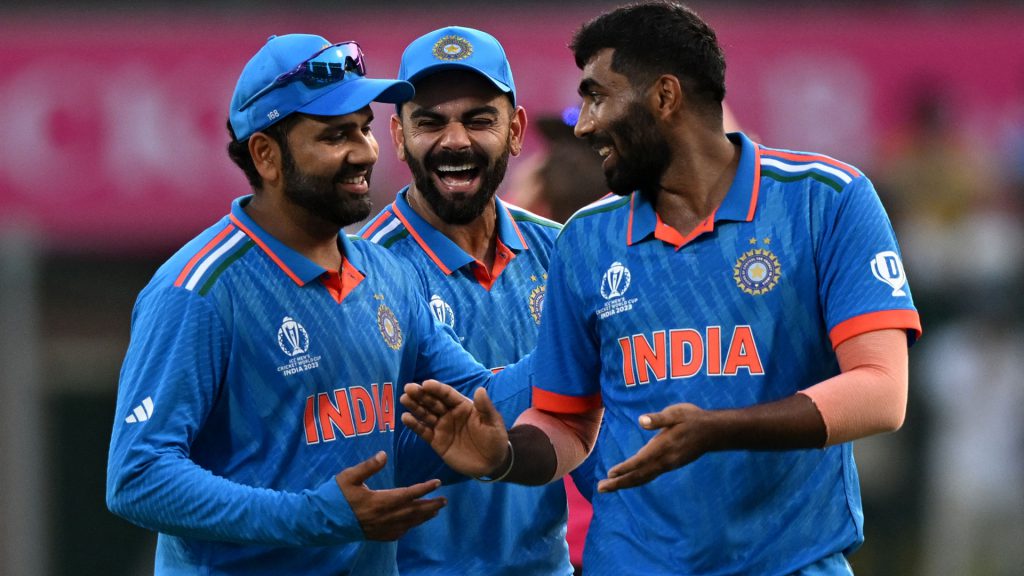
India’s Remarkable Bowling Transformation
In his analysis, Akhtar emphasized the transformative impact of Shami’s inclusion in India’s playing eleven following Hardik Pandya’s injury. Acknowledging Shami’s outstanding performances against New Zealand and England, Akhtar credited India’s ability to win matches through their bowling prowess, showcasing a shift from their traditional reliance on batting strength. He commended the collective effort of the Indian bowling unit, particularly recognizing the strategic brilliance of fast bowler Bumrah.
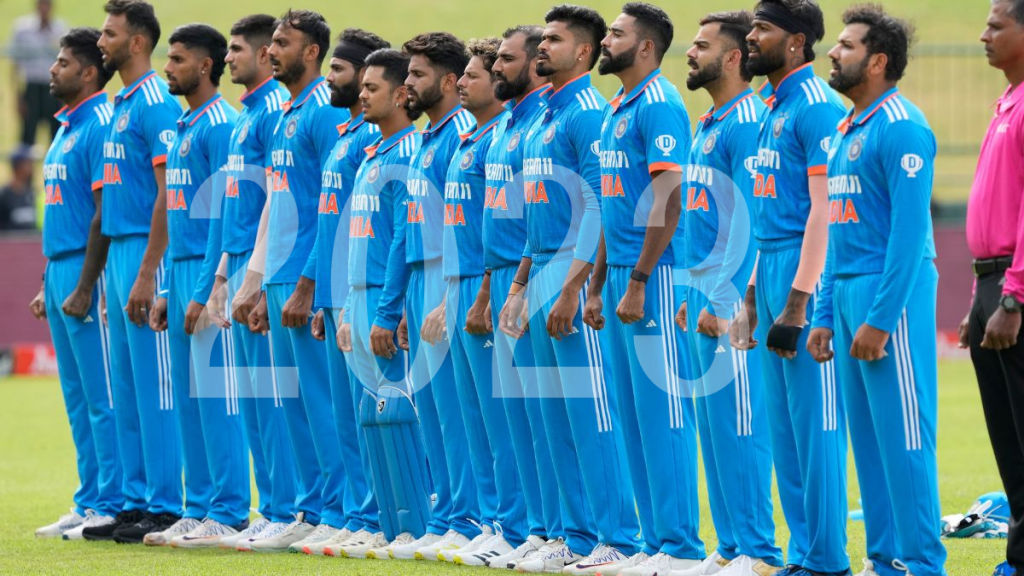
India’s Path to World Cup Glory
Looking ahead, Akhtar voiced his confidence in India’s potential to secure their third ODI World Cup trophy, highlighting the team’s upcoming matches against Sri Lanka, South Africa, and the Netherlands. Expressing optimism, he emphasized the significance of maintaining their unbeaten streak en route to the final, setting the stage for a potential historic ICC World Cup victory. However, Akhtar cautioned against compromising the successful bowling unit once Pandya returns to full fitness, warning against the potential detriment of a partially fit Pandya’s inclusion at the expense of a bowler.
Akhtar’s Praise for India and its Response to Criticism
Addressing skepticism surrounding his praise for the Indian team, Akhtar reiterated the exceptional nature of India’s performance, particularly in their ability to defend a modest total with a significant margin of victory. Undeterred by criticism, Akhtar reaffirmed his admiration for India’s exceptional cricketing prowess, urging acknowledgment and appreciation of their commendable achievements.
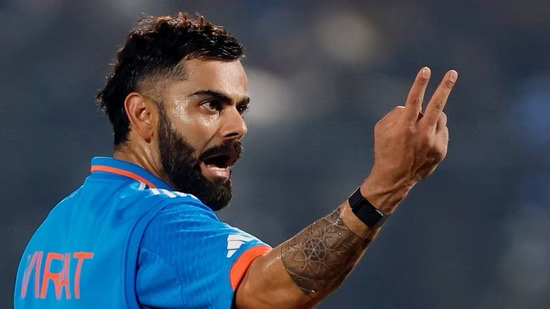
Shoaib Akhtar’s Perspective on Virat Kohli
Shifting focus, Akhtar’s history of praise extends beyond team performances to individual players, notably including former Indian team captain Virat Kohli. Reminiscing on Kohli’s resilience during a challenging phase in his career, Akhtar highlighted the pivotal role played by Kohli’s consistent century-scoring performances, leading to India’s victories. Recognizing Kohli’s contribution to the team’s success, Akhtar emphasized the significance of Kohli’s monumental centuries during crucial chases, solidifying his status as a crucial asset for the Indian cricket team.
In a comparison between Kohli and the legendary Sachin Tendulkar, Akhtar acknowledged Tendulkar’s status as one of the greatest batsmen while highlighting the challenges Tendulkar faced as a captain. Drawing parallels, Akhtar expressed confidence in Kohli’s eventual resurgence, expecting him to return to his prolific scoring form once he finds his equilibrium.
In summary, Akhtar’s acknowledgment of India’s exceptional performance and his recognition of individual players’ contributions underscore the team’s formidable presence in the 2023 ICC World Cup, setting the stage for a potential historic triumph in the coming days.







You must be logged in to post a comment Login